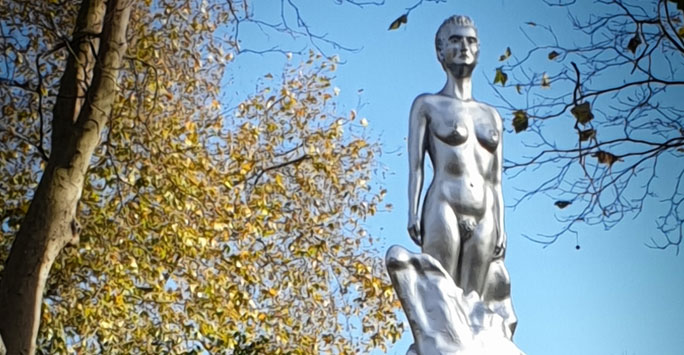
Dr Myriam Wilks-Heeg gives her view on the contraversial new statue honouring feminist icon, Mary Wollstonecraft.
"Last week, after a decade of campaigning and raising over £100,000, the only statue in Britain honouring Mary Wollstonecraft - feminist, author and educator - was unveiled in Newington Green, where, in 1784 she and her sister had opened up a school for girls.
Since the unveiling, the small sculpture of a naked, silvered-bronze woman that emerges from an undefined mass of the female form, has sparked intense debate in the press and on social media.
This is nothing new: statues are contentious, and as our perspectives and interpretation of history changes in the present, so should the way in which we discuss and remember figures of the past. Here, it is not her legacy that causes controversy - few would doubt the seminal character of Wollstonecraft's philosophy, and her Vindication of Rights remains an essential piece of work nearly 230 years after it was first published.
Its prescience gives it a timeless quality, especially since women are yet to achieve the full equality that Wollstonecraft made a case for so powerfully in her personal and professional life. Instead, contentions stem from the different views on how her legacy should be represented, and whether the sculpture of a naked woman does her pioneering philosophy any justice.
The shape we’d all like to be?
It is ultimately a fruitless endeavour to try and determine how Wollstonecraft would have received the statue (it is, after all, for her and not of her), but I bristle at having her achievement reduced to corporeality.
Feminists have long challenged the idea of sexed difference, that is that a woman's biology or physicality naturally prevents her from developing and expressing rational thought.
Given that Wollstonecraft was particularly vocal about this very issue, opposition to the sculpture is hardly surprising.
The artist, Maggi Hambling, responded to such criticisms by reportedly pointing out that the statue is "...more or less the shape we'd all like to be".
This rather sweeping assumption about women's aspirations and their shapes, in essence asserting a universal ideal of female beauty for the heterosexual, able-bodied 'every-woman', did little to quell discussion and, predictably, added fuel to the fire.
Hambling’s defence of nudity ("...clothes would have restricted her"), too misses the point: women’s (naked) bodies are often powerful sites of protest, but a silvery, conventionally attractive nude on a plinth does not necessarily convey a message of empowerment or protest.
Lack of women statues
Perhaps the least controversial aspect about Newington Green's sculpture is the wider context to her final unveiling: Hambling's gift to Wollstonecraft is one of a relatively small number of statues that commemorate female historical figures in Britain or, more generally, one of the few that does not celebrate the achievements of white men.
That and the length of time it has taken the public campaign group Mary on the Green to scrape together the funds needed to commission the piece highlights how much work remains be done to bring to public attention the lives and achievements of those on the margin of historical narratives."
Discover more